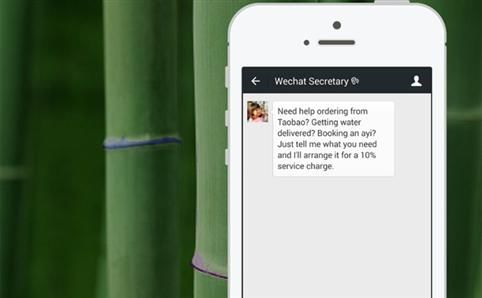What the West can learn from China about chatbot marketing
September 7, 2020Microsoft’s Tay generated a lot of buzz when the robot debuted earlier this year. But brands like Ikea and Uber, Baidu and Microsoft and Tencent have been engaging bots for the Chinese and Asian markets for a lot longer than the West, and to a more receptive and positive audience.
Chatbots are a hot topic in the West. Newspapers and TV channels all seem to be running stories about the latest practical applications of artificial intelligence and how they could permanently change the way we talk to businesses and service providers.
The concept of ‘conversational commerce’ has really taken off – we’re fascinated by the idea that humans can talk to intelligent virtual assistants in natural languages about purchases, deliveries and service issues without ever realising that they’re talking to a bot rather than another person.
But, as with a number of ‘new’ technical developments (mobile payments are a great example), China is already ahead of the game.
China: showing the rest of the world how it’s done
Microsoft
Microsoft’s recent attempt to introduce a chatbot called ‘Tay’ to young people in the United States ended in disaster after it started parroting racist, sexist and other inflammatory comments posted by Twitter and other social messaging users.

Tay wasn’t Microsoft’s first chatbot to be launched to the general population. In 2014, Xiaobing started talking to people on Weibo, and since then she has become a hugely popular virtual companion, with around 40 million registered users, 2.2 million followers on Japanese messaging platform Line and a reputation as Weibo’s top influencer.
So far she has avoided being anything other than smart, sassy and cheerful – despite some users best attempts to expose her dark side. Around 25% of users have told Xiaobing ‘I love you’ at some point.
With this kind of profile and user statistics, it’s clear that Chinese users don’t just accept the idea of having a conversation with an artificial intelligence – they positively embrace it.
Here’s a recent conversation with Xiaobing on WeChat.
XB: I am Microsoft’s third generation AI. The smartest and the most beautiful. Don’t ask me what I can do – there’s too much I can do.
XB: If you want to know the power of AI we can play ‘cheng yu jie long’ (a Chinese idiom play on words game)
WeChat user: Hello! (literal translation You Good?)
XB: You good, I’m good, everyone is good.

China loves chatbots – so what does this mean for business?
WeChat’s WeSecretary
Unsurprisingly, WeChat, currently the world’s biggest messaging platform with 700 million users, has been quick to recognise the usefulness of chatbots from a business perspective.
Launched last year, its virtual personal assistant WeSecretary will, for a 10% fee, help users to buy products, book restaurants, pay bills and help out with a range of other internet-based admin activities.

Baidu’s Duer
Baidu has also entered the arena with Duer. Duer covers the same territory and completes the same kind of tasks, though Baidu has big plans for its development: “In the near future, it will expand to include a wide range of services including ride hailing, housekeeping, manicures and pedicures, education, healthcare, travel, designated driver services, and more.”

Uber
Never known to miss a strategic trick, taxi-hailing brand Uber has employed chatbots in the release of its API in China.
At the same time, it has given developers the chance to integrate Uber functionality into third-party apps, and has also teamed up with Raven Tech, an AI-focused start-up. Its virtual assistant ‘EVA’ allows users to book rides with Uber, chat about the journey and discuss prices.

Ikea
The Swedish furniture manufacturer has been quick to embrace mobile- and social-based commerce in Asia, with a presence on each major platform as well as territory-specific apps. It has made chatbots an integral part of its overall strategy – Anna, its customer service bot, answers questions and gives advice via Twitter and email. Anna has the ability to give customers a choice over how to communicate, and can hand them off to human assistance if necessary.

With the launch of Facebook’s ‘M’ signalling the rising global interest in chatbots, it looks like we may be entering the next phase of retail technology – an intelligent, responsive service entirely focused on what works for the user.
China has once again shown the way – virtual assistants now integrate seamlessly with the lives of both messaging platform users and brand fans – if they want to get close to the retailer or service of their choice, all they have to do is open the messaging service they already use every day and ask a question.
Elisa Harca is the regional director of Red Ant Asia.
This article is also on ClickZ Asia.

